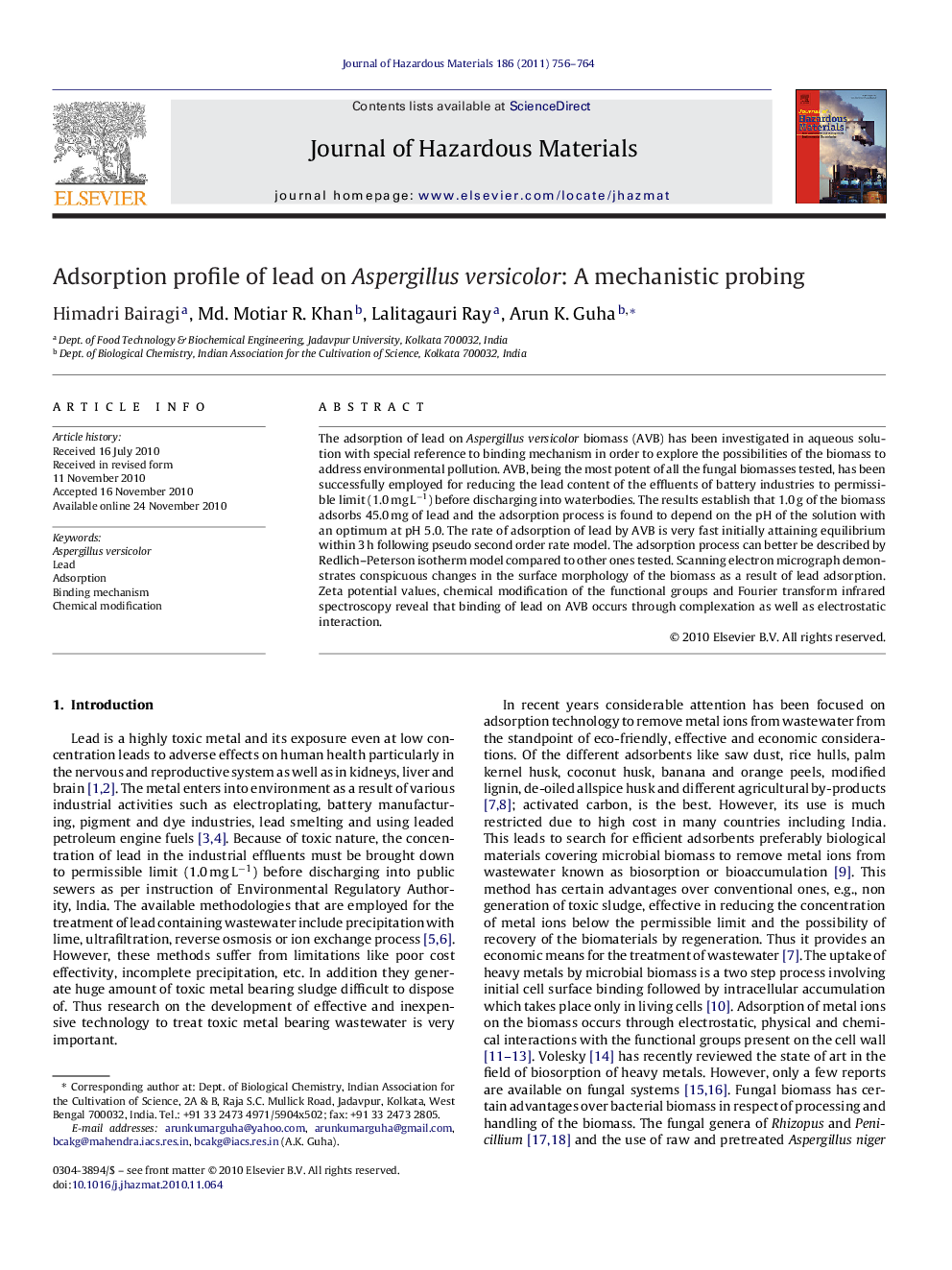| Article ID | Journal | Published Year | Pages | File Type |
|---|---|---|---|---|
| 10372788 | Journal of Hazardous Materials | 2011 | 9 Pages |
Abstract
The adsorption of lead on Aspergillus versicolor biomass (AVB) has been investigated in aqueous solution with special reference to binding mechanism in order to explore the possibilities of the biomass to address environmental pollution. AVB, being the most potent of all the fungal biomasses tested, has been successfully employed for reducing the lead content of the effluents of battery industries to permissible limit (1.0 mg Lâ1) before discharging into waterbodies. The results establish that 1.0 g of the biomass adsorbs 45.0 mg of lead and the adsorption process is found to depend on the pH of the solution with an optimum at pH 5.0. The rate of adsorption of lead by AVB is very fast initially attaining equilibrium within 3 h following pseudo second order rate model. The adsorption process can better be described by Redlich-Peterson isotherm model compared to other ones tested. Scanning electron micrograph demonstrates conspicuous changes in the surface morphology of the biomass as a result of lead adsorption. Zeta potential values, chemical modification of the functional groups and Fourier transform infrared spectroscopy reveal that binding of lead on AVB occurs through complexation as well as electrostatic interaction.
Related Topics
Physical Sciences and Engineering
Chemical Engineering
Chemical Health and Safety
Authors
Himadri Bairagi, Md. Motiar R. Khan, Lalitagauri Ray, Arun K. Guha,
